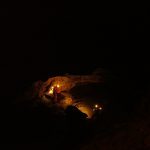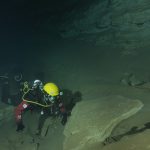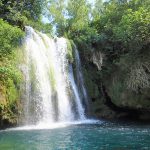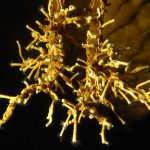The Dinarides
The Dinaric karst is one of the largest karst landscapes in Europe and the world. It encompasses the area of the Dinarides, a mountain chain named after Mt. Dinara, situated on the border between the Dalmatian part of Croatia and Bosnia and Herzegovina.
The main orientation of the relief and geological structures of the Dinarides range is northwest to southeast, which is often called the Dinaric orientation. Most of the Dinaric karst, which includes all karst features (both on the surface and underground) is found within Croatian borders. Due to the unique natural features, geological characteristics, cave fauna and impressive natural beauty, the Dinaric karst certain belongs to the global natural heritage.
The Dinaric karst is known worldwide as a classic type of karst (locus typicus). The word karst comes from the Indo-European root kar, meaning rock or rocky area. In Croatia, the word karst was first recorded in 1230 in the Charter of Juraj Pariježić who received the gift of “kras”, a locality near the settlement of Dobrinj on the Island of Krk. The concept of karst has been accepted at the global level, and numerous names of karst phenomena from the Dinarides area have been accepted into the international terminology in their original form (uvala, kamenica, ponor, dolina, hum and polje). The first true scientific research of karst was conducted in the Dinaric karst.
In general, karst is a specific form of relief that develops on a substrate made of soluble rock. It is characterised by special morphological, hydrological and hydrogeological properties. The karst formation processes are jointly called karstification, and the dominant process is rock corrosion. Karstification is a constant process, and under its influence, the relief is constantly being shaped and altered. The Dinaric karst is currently in the phase of developed and mature karst with a strongly karstified underground, numerous depressions, dolines, poljes and a strongly interconnected underground hydrographic network.
The settling of carbonate deposits from which the karst area of the Dinarides was formed took place on the Adriatic-Dinaric carbonate platform, an environment of purely carbonate sedimentation in which the carbonate deposits of today’s outer Dinarides were formed. These conditions lasted for 150 million years, during the Jurassic and Cretaceous eras. The collision of the structure of the former Adriatic-Dinaric carbonate platform with Eurasian structures took place in the Late Eocene, about 35 million years ago. This caused a lifting of the then deposited carbonate rock, forming the Dinarides mountain range. During this lifting process, which lasted about 35 million years, the rocks were subjected to powerful tectonic forces. Intensive wrinkling, the formation of thrust faults and other faults created mechanical stress, causing rocks to crack and creating countless fissures. Under a favourable, moderate climate with sufficient precipitation, the conditions were ideal for the development of karst.
It has been estimated that almost 50% of Croatia is covered by karst. In the Croatian sections of the Dinaric karst, the most intensive periods of karstification were recorded during the Cretaceous era, and from the Eocene to the Palaeocene. The large surface area and thickness of karst has resulted in this wealth of relief forms (both on the surface and underground), along with numerous other phenomena in the Croatian karst.
Photograph: Lucija and Rade Jug














